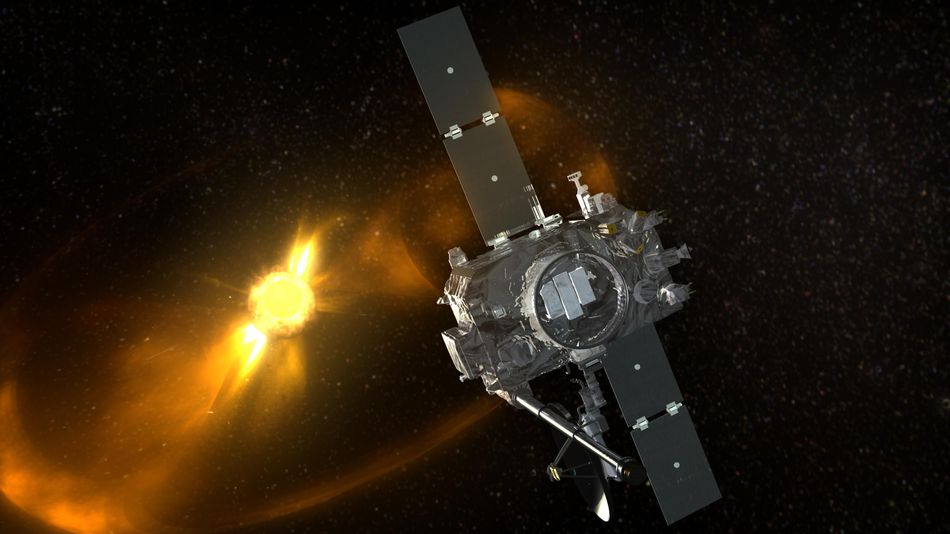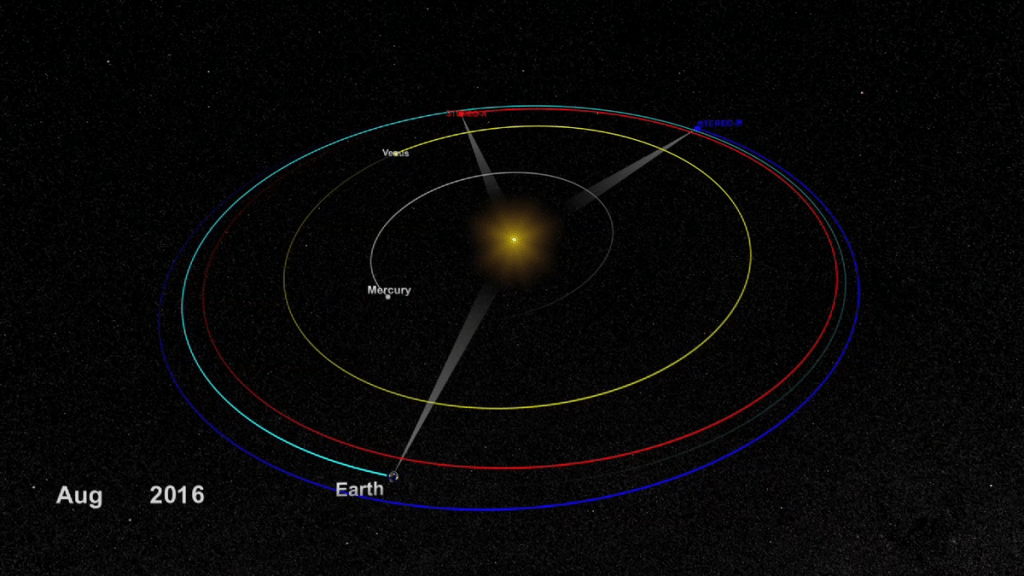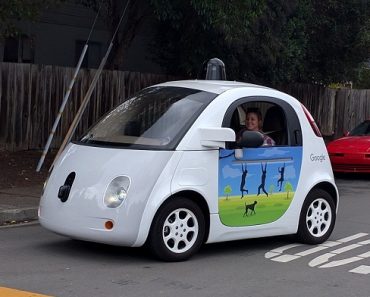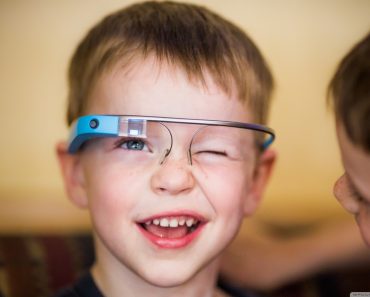After a long wait of two years, NASA has established a connection with a lost spacecraft.
NASA had lost control of STEREO-B more than 22 months ago. On Sunday, Deep Space Network locked onto the satellite’s signal and delivered the long awaited news.

An artists depiction of STEREO-B. (PHOTO: NASA)
However, there are still complications and STEREO-B isn’t out of the woods. It is yet to be determined if the spacecraft is still in good shape. Mission controllers are not sure if STEREO-B would be able to carry out its solar research. The satellite wasn’t able to contact its home planet for two years which means that it was unmonitored and unchecked.
On the more positive side, the physical body of the satellite is completely intact and that is a promising sign.
The primary function of STEREO-B and (it’s perfectly working sibling) STEREO-A is to orbit the sun simultaneously. This gives a unique perspective to the scientists; a view of an entire star. If both the probes are working properly the data they send back allows the scientists to carry out an uninterrupted research on sun. In simpler words, we’d be monitoring sun 24/7.
The long road to recovery
It all began on October 1, 2014 when STEREO-B first slipped off NASA’s radar. NASA was carrying out some tests on the spacecraft’s systems when they realized no data was returning.
The probes STEREO-A and B are equipped with “command loss timer”. The function reboots the entire communication system of the probe if they lose touch with earth for more than 72 hours. When STEREO-B went black in 2014, scientists were checking on this system in anticipation of a blackout.
STEREO-A and B were launched in 2006. They were supposed to function until 2008 but they lasted more than scientists had designed them for. Researchers were delighted. But it wasn’t without some challenges.

The orbits of STEREO-A and STEREO-B. (PHOTO: NASA)
Since both spacecrafts are in orbit around the sun, scientists realized that due to sun’s interference with our earth, there would be blackouts. Little did they realize that one day they’d have to face the possibility of losing STEREO-B for good. Fortunately it didn’t happen.
“The sun emits strongly in nearly every wavelength, making it the biggest source of noise in the sky,” Dan Ossing, mission operations manager for STEREO
“Most deep space missions only have to deal with sun interference for a day or so, but for each of the STEREO spacecraft, this period lasted nearly four months.”
Scientists were constantly trying to get control of STEREO-B in order to charge its batteries but up until Sunday, they were unsuccessful.
NASA has been using Deep Space Control, a world-wide network of large antennas and communication facilities to get back in touch with STEREO-B. They failed for the last two years but they didn’t give up and it seems like their hard work and persistence paid off.









